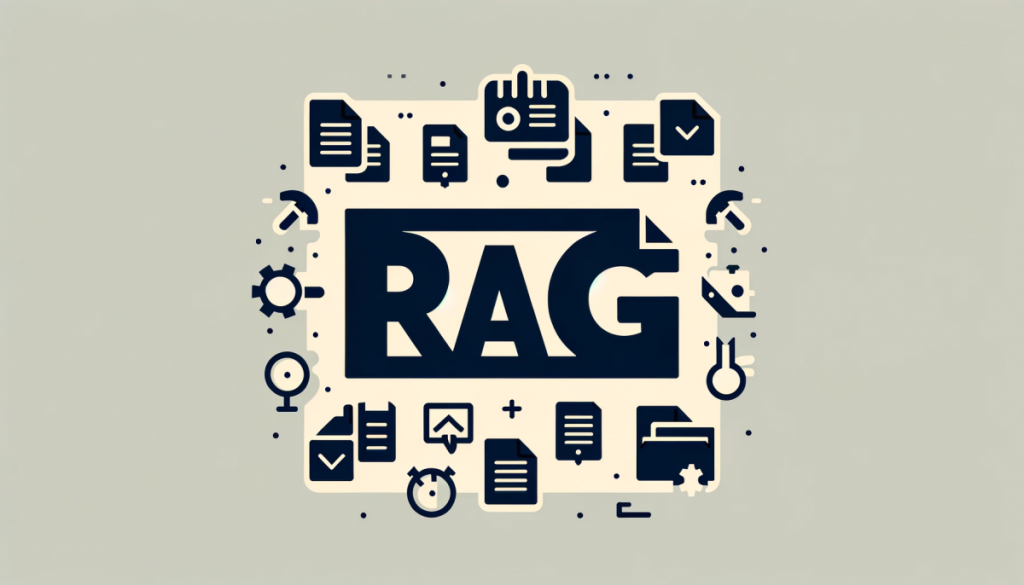Power of Retrieval-Augmented Generation Enhancing AI Capabilities with Precision and Context

With the rise of artificial intelligence (AI), the need for better and more accurate natural language processing (NLP) models is growing fast. One of the most promising solutions to that goal is Retrieval-Augmented Generation (RA), a hybrid approach that combines the strengths of good old trusty retrieval-based models with the generators of modern denoising autoregressive language models. RA takes artificial intelligence that understands humans to the next level, resulting in a more nuanced and context-centric aid to problem-solving. This article is a deep dive into RA. How does it actually work and what are its benefits, shortcomings and potential applications in real-world problems in different industries?
Understanding the Basics of Retrieval-Augmented Generation
Retrieval-Augmented Generation (RAG) is an algorithm that combines the best aspects of retrieval-based models (‘retrievers’) with generative models that have traditionally taken the lead in natural language generation. Pre-trained data tends to make AI models’ generative approaches too ‘general’ while retrieval-based models, which pull information from sets of pre-formatted data stored in a static database or knowledge base, can make outputs too specific (narrow in focus) and perhaps less contextually aware. RAG harnesses the precision of retrievers by accessing externalised knowledge sources on the fly, which converts generative models that might otherwise fall productively mute into hybrid models that produce more accurate and contextually rich responses. This is particularly relevant for complex problem-solving.
The retriever finds and extracts the information, the generator takes it to vote on a final response The RAG approach brings these two strategies together: the retrieval component finds and extracts the best piece of information from an external knowledge base or corpus, and then passes it to the generator, which uses the information to voted syntax tree, a structure indicating how words are glued together to form a valid sentence for the context. The generator also amplifies the response to achieve consistency with citations, quotes and quotes, quotes. The resulting method combines the best of both worlds: two highly cooperative steps that tend to both answer the request correctly (ie, align the answer with citations and quotes, which are crucial to answer an instructive request) and sound likely (eg, the answer fits the context, likely an outcome of the fluent cues in the voting). The improvement cycle ensures that the models will find better answers as new information lands on the internet faster than it takes for the cycle to replicate Already, RAG approaches to AI applications are implemented in different industries – for example, in customer services, research and development, among others.
The Advantages of Retrieval-Augmented Generation
Perhaps the most important benefit of RAG is the ability it gives to AI to significantly increase the accuracy and relevance of what it generates, which is often the greatest challenge and area for improvement for AI applications that involve generating responses. In many AI applications, the key is not simply to have responses that are technically correct, but to generate and present those responses in manner that is relevant to the exact context of an individual query. Indeed, this was one of the key takeaways from the Lead Paraphrase study: RAG adds value by using real-time retrieval to supplement the generative process with the most pertinent and up-to-date information available, ensuring that whatever is generated is technically correct and contextually appropriate. In fact, careful quality testing of the Lead Paraphrase study found that incorporating RAG made the outputs significantly more useful to readers than what would have been generated without it. A great example of how this works in practice can be seen with customer support systems that can now leverage RAG to present the exact, contextually appropriate responses to customer queries. In many cases, RAG can deliver the latest troubleshooting guides or other product information that’s available in a company’s knowledge base, offering the customer a correct response and access to the information they’re seeking.
A third benefit or RAG is its potential to be more computationally efficient than purely generative models in the sense of needing less computational effort to generate high-quality responses. Generative models like LaMDA can take a lot of time (for example, they need hundreds of hours of training using big training sets to generate useful content) and resources. Incorporating retrieval mechanisms can help RAG scale down the size of the generative process to a smaller, more useful set of long-term memory, which reduces computational needs. This could make RAG particularly appealing for application in environments where there is limited computational power (eg, mobile devices) or for applications where speed is of the essence. Moreover, because retrieval mechanisms don’t necessarily change the information accessible through RAG, we could continually update the knowledge base, without the need to retrain the model.
Challenges in Implementing Retrieval-Augmented Generation
Despite its many benefits, RAG poses several challenges to overcome for optimal functionality. Since the human-sounding and distracting ‘repair’ aspect of text often occurs when the retrieval and generation do not get their bearings from each other, a major challenge is for these two components to work well together. In other words, the retrieval component needs to be as effective as possible in selecting the most relevant pieces of information, while the generation component needs to be as effective as possible in synthesising this information into well-formed, contextually situated responses. Requiring this close and effective interaction between bot and human make algorithms very sophisticated and require a lot of fine-tuning. The most critical factor differentiating an RAG system from others, however, is in the finesse of its retriever, as the degree of its book-knowledge determines how well the system operates.
Another major challenge in the implementation of a RAG system is the quality and consistency of the external knowledge sources employed by the retriever. The precision of the data that the retriever collects is crucial, because it will be used as input by the generator to create high-fidelity outputs. If the external knowledge base that the retriever uses is outdated or incorrect, it can lead to the generation of output that is inaccurate or misleading. This means that the maintenance and curation of the external knowledge base to ensure that it is accurate and timely is of the utmost importance. In essence, this means that the three main components of a RAG system (the retriever, the generator and the knowledge base) must be refined continuously, in order to provide RAG systems an advantage in delivering high-fidelity outputs. Finally, ambiguous or incomplete queries can pose a challenge to the retriever, where it is unable to find relevant information, which in turn will lead to poor performance of the generation results.
Applications of Retrieval-Augmented Generation in Industry
And this generative technique can be harnessed across industries, the outcomes of which benefit from the generative technique’s ability to make AI outputs more accurate and relevant. In medicine, for instance, a clinician could use RAG to generate patient-specific recommendations for the best course of action based on the latest research and best clinical practice. In doing so, generative AI could retrieve and reproduce relevant medical literature or patient records in the course of generating results, aiding a clinician in arriving at the best decision based on the most relevant information. Similarly, in the legal domain, RAG could improve legal research by generating summaries or analyses based on the most relevant case law, statutes or legal precedents.
Another area where RAG could help is in the world of customer service. Customer service systems that rely on AI today often have a hard time returning accurate and nuanced responses to complex inquiries when the information they need to address those inquiries could change at any moment (such as product updates and policy changes). RAG avoids this problem by flexibly retrieving the latest information from the company’s corpus of knowledge and then generating responses tailored to that information. This means better customer service and efficiencies since customers are receiving the latest and best information about the situation. In healthcare, doctors and nurses could potentially benefit from RAG to provide better diagnoses. When dealing with the human condition – particularly complex issues such as mental health – generating responses on a one-size-fits-all basis can be inadequate. Another area of interest could be integrating retrieval and generation in other high-stakes decision-making processes in fields such as finance, education and research.
Future Prospects and Developments in Retrieval-Augmented Generation
RAG is on the cusp of an exciting revolution as the limits of current AI-technology begin to unlock imagined futures. The most immediate area for improvement is in making the retrieval process more context sensitive and better at handling complex queries. The current generation of retrievers are generally effective at identifying relevant information, but the state of the art continues at pace and could soon be made more nuanced: there is active research in better natural language understanding of the context in which a query is made so that the retriever can determine the true intent behind the query. With RAG systems becoming embedded in more and more industries, this ability to tune into domain-specific knowledge is likely to be vital to allow it to continue to succeed.
We expect development in the generative capacity of RAG to produce increasingly complex responses in contextually sophisticated outputs from RAG systems. It is conceivable that the domain of state-of-the-art AI models will become so complex that RAG systems can produce more human-sounding responses beyond simple QA, such as more detailed reports, creative content, or predictive analyses based on information from the retrieved input. Alongside these prospects for RAG development, it’s plausible to imagine further integration of RAG systems with other emerging AIs, such as reinforcement learning and unsupervised learning, creating more sophisticated and adaptive AI systems. As a consequence, we expect that RAG will not only advance its current capabilities but also apply this technology to an increasing number of potential use cases. Overall, we view RAG as the key technology behind developing future AI.
Conclusion
Retrieval-Augmented Generation (RAG) could be the future because it brings together all benefits of retrieval-based and generative models while mitigating some of the concerns surrounding both of them. Sure, implementing RAG can substantially increase the technical efforts required, as it necessitates the integration of a retrieval and a generation component and attention to quality of external knowledge sources. Nonetheless, these efforts are definitely worth it in terms of what RAG could enable. RAG can widely be applied across a multitude of industries, examples in fields such as healthcare and in customer service demonstrate a lot of potential for employing RAG in even more complex use cases. If current developments in AI technology continue, we ought to see a lot of RAG in our daily lives over the years to come. The dramatic improvement in the quality of retrieval-based AI outputs and text-based AI such as GPT3 shows that transformative change is not only possible, but is also already happening. Retrieval-Augmented Generation has and will continue to present inspiring and important new challenges in terms of data, technology, design processes and more, and because of that we are excited to see what the future of RAG brings.







